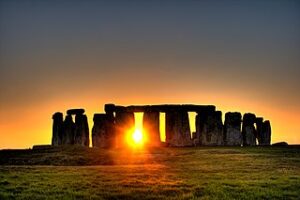
Winter Solstice on December 21 in the Northern Hemisphere is both the shortest day of the year, and the first day of Winter. The word solstice finds its root in the Latin words sol for sun and sistere, meaning “to stand.” The term also refers to new birth, as a new year rises from the old.
The short day and long night of Solstice inspired many customs we still practice during modern holiday season celebrations.
Io Saturnalia
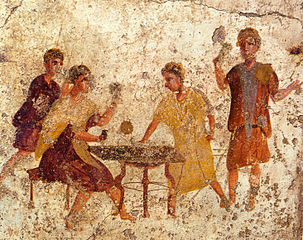
Ancient Romans celebrated Saturnalia, a seven-day festival from December 17 – 24 of the Julian calendar. It began with a sacrifice to Saturn, continued with a public banquet and private gift-giving of modest presents. But the most dramatic aspect of the holiday was social role reversals. Men dressed as women; masters dressed as servants, and slaves feasted at banquet tables. Ordinary pursuits of work or business were set aside while Romans spent the time gambling and feasting.
Decorations included boughs from laurel and evergreen trees to symbolize the continuity of life, and lamps that were kept burning to ward off evil spirits.
Yule
The word Yule has several possible sources. Norse myths described the sun as a wheel that changed with the seasons. The word for the wheel was jól, which may be the source of yule.

To celebrate the Solstice, Norsemen let bonfires, shared stories, and drank ale – which may have made the stories more creative.
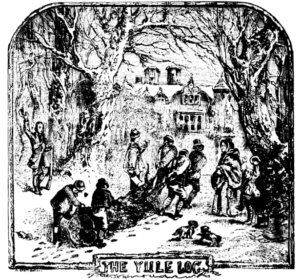
British Druids observed the day by cutting mistletoe, a parasite that grows on oak trees. Oak trees were sacred, and mistletoe was a symbol of life in the dark winter months.
Burning the Yule Log, which was more accurately an entire tree, was a way to entice the sun to return. The Yule log fed the fire through what became the Twelve Days of Christmas.
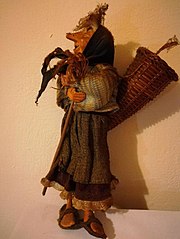
In Finnish lore, the goddess Louhi caused winter darkness when she kidnapped the sun and moon, and hid them inside a mountain.
Italian folklore refers to the goddess Befana. During Solstice, or perhaps the day before Epiphany, she rides around the world on her broom to leave candy and gifts for well-behaved children, and a lump of coal for the others [sound familiar?]. Invitations for Befana to visit came by way of a rag doll in her likeness placed by the front door or window.
The Kallikantzaroi
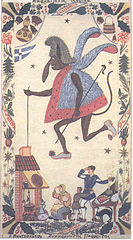
The Kallikantzaroi, from Greek mythology, live underground and emerge during Solstice to cause havoc. The creatures are small, black, male, mostly blind and have long black tails.

One way to avoid the chaos Kallikantzaroi cause is to leave colanders where they are easily seen. Kallikantzaroi can only count up to the number three, and they spend the night trying to count the holes in the colander.
However you celebrate this festive season, have a wonderful time!
🌲 🌲 🌲
Illustrations
Winter Solstice at Stonehenge taken December 27, 2008 by simonwakefield.
Dice Players in Pompeii.
Mistletoe with flowers by Ticketee.
Hauling the Yule log, 1864.
Befalna by Tiguliano.
Matrakoukos, chief of the Kallikatzaroi.
“Kallikantzaroi – Greek Christmas Goblins.” Greeker than the Greeks.
The Story Behind Yule. Almanac. Nov. 29, 2021.
Winter Solstice. BBC. June 6, 2007.
Michelle Bierma & Time Reese. “Winter Solstice.” Three Rivers. Dec. 9, 2019.

Sandra Wagner-Wright holds the doctoral degree in history and taught women’s and global history at the University of Hawai`i. Sandra travels for her research, most recently to Salem, Massachusetts, the setting of her new Salem Stories series. She also enjoys traveling for new experiences. Recent trips include Antarctica and a river cruise on the Rhine from Amsterdam to Basel.
Sandra particularly likes writing about strong women who make a difference. She lives in Hilo, Hawai`i with her family and writes a blog relating to history, travel, and the idiosyncrasies of life.

